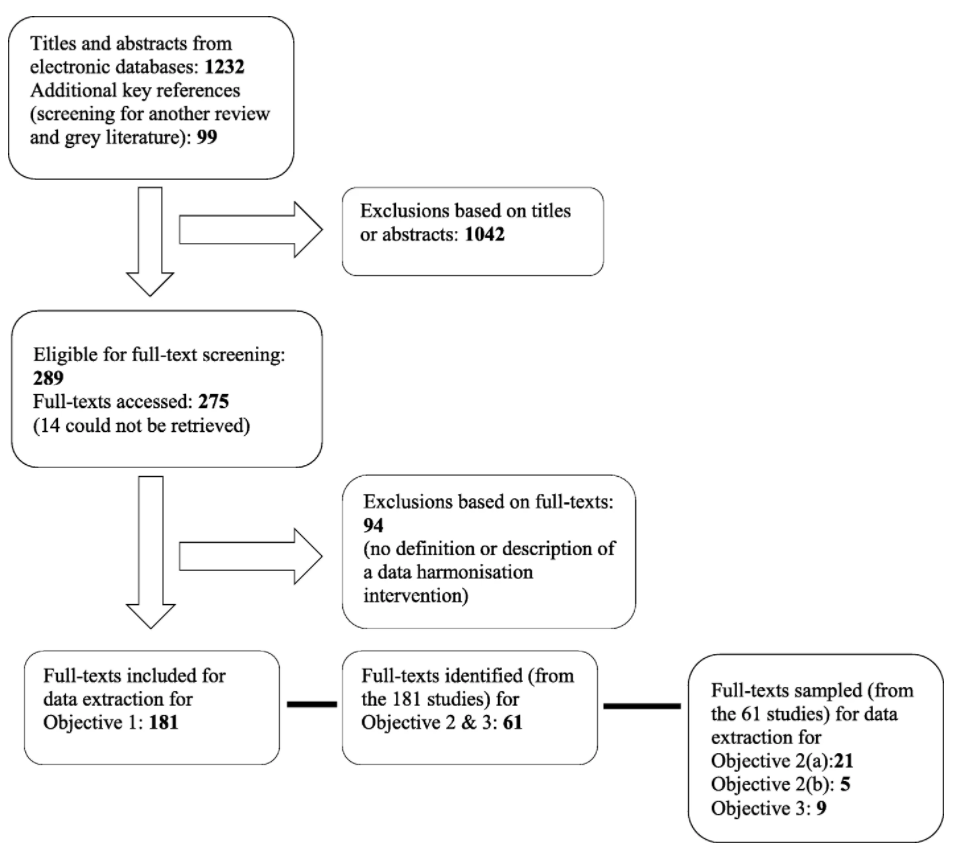Difference between revisions of "Template:Article of the week"
Shawndouglas (talk | contribs) (Updated article of the week text) |
Shawndouglas (talk | contribs) (Updated article of the week text) |
||
| Line 1: | Line 1: | ||
<div style="float: left; margin: 0.5em 0.9em 0.4em 0em;">[[File:Fig2 | <div style="float: left; margin: 0.5em 0.9em 0.4em 0em;">[[File:Fig2 Schmidt BMCMedInfoDecMak2020 20.png|240px]]</div> | ||
'''"[[Journal: | '''"[[Journal:Definitions, components and processes of data harmonization in healthcare: A scoping review|Definitions, components and processes of data harmonization in healthcare: A scoping review]]"''' | ||
[[Data cleansing|Data harmonization]] (DH) has is increasingly being used by health managers, information technology specialists, and researchers as an important intervention for [[Health information technology|routine health information systems]] (RHISs). It is important to understand what DH is, how it is defined and conceptualized, and how it can lead to better health management decision-making. This scoping review identifies a range of definitions for DH, its characteristics (in terms of key components and processes), and common explanations of the relationship between DH and health management decision-making. This scoping review identified more than 2,000 relevant studies (date filter) written in English and published in PubMed, Web of Science, and CINAHL. Two reviewers independently screened records for potential inclusion for the abstract and full-text screening stages. ('''[[Journal:Definitions, components and processes of data harmonization in healthcare: A scoping review|Full article...]]''')<br /> | |||
<br /> | <br /> | ||
''Recently featured'': | ''Recently featured'': | ||
: | {{flowlist | | ||
* [[Journal:Interoperability challenges in the cybersecurity information sharing ecosystem|Interoperability challenges in the cybersecurity information sharing ecosystem]] | |||
* [[Journal:Data without software are just numbers|Data without software are just numbers]] | |||
* [[Journal:Persistent identification of instruments|Persistent identification of instruments]] | |||
}} | |||
Revision as of 15:12, 18 October 2021
"Definitions, components and processes of data harmonization in healthcare: A scoping review"
Data harmonization (DH) has is increasingly being used by health managers, information technology specialists, and researchers as an important intervention for routine health information systems (RHISs). It is important to understand what DH is, how it is defined and conceptualized, and how it can lead to better health management decision-making. This scoping review identifies a range of definitions for DH, its characteristics (in terms of key components and processes), and common explanations of the relationship between DH and health management decision-making. This scoping review identified more than 2,000 relevant studies (date filter) written in English and published in PubMed, Web of Science, and CINAHL. Two reviewers independently screened records for potential inclusion for the abstract and full-text screening stages. (Full article...)
Recently featured:










